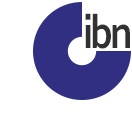
Global Biodiversity Outlook
If you set yourself ambitious targets like e.g. the CBD targets until 2020 or before that to significantly reduce the loss of biodiversity until 2010, at a certain point in time you have to answer the question how close to fulfilling these targets you really got. To answer exactly this question the secretariat of the Convention on Biological Diversity (CBD), with the help of many partners, produces the Global Biodiversity Outlook (GBO), a report on the status of biodiversity on a global level.
The most recent edition is GBO 4 which was published end of 2015. It contains a half time estimation on reaching the 2020-targets.
Indicators for the GBO
In order to describe the global status of biodiversity and to see trends compared to previous reports, a set of global indicators was agreed upon. This indicators are monitored by different institutions.Quite well known are e.g. the Red Lists of endangered species compiled by IUCN or the regularly checked ice cover in the arctic at the end of the polar summer. The World Conservation Monitoring Centre (WCMC) in Cambridge collects information on the status of protected areas worldwide, the Living Plant Index monitors the development of more the 7000 populations of more than 2300 vertebrate species since 1970 and can exactly document how their status has turned (mostly) worse.
GBO 4
GBO 4 came to the conclusion that for most targets steps into the right direction have been taken but that nevertheless the targets will not be reached unless efforts are significantly strengthened worldwide. Positive exceptions are the more administrative targets like installing more protected areas or signing the Nagoya protocol. A target where there is no progress at all and the situation has even get worse is the conservation of coral reefs. GBO 4 shows trends for al 20 targets and for all of them adds a list of measures that could be taken to enhance progress in reaching the targets.
GBO 3
In May 2010 the third edition of the report was published as GBO 3. GBO 1 and GBO 2 had been published in 2001 and 2006, respectively.GBO 3 clearly showed that the 2010-target has not been reached. Despite some positive developments in some places, nearly all indicators showed a declining status of biodiversity, e.g. an increase in the drivers of loss. GBO 3 showed for instance that amphibians are the most threatened group of vertebrates and that the genetic diversity of farmed animals is decreasing rapidly due to the loss of local races. GBO 3 also mentioned that the danger to reach so called tipping points is increasing in many ecosystems, which would lead to irreversible dramatic destruction and the loss of ecosystem services.Despite its global focus GBO 3 could also differentiate between regions and e.g. showed that inland water ecosystems globally belong to the most threatened ecosystems, although the status of many water bodies in Europe has increased thanks to stricter laws and better sewage techniques. This regional turn for the better is overruled by a global turn to the worse due to increasing pollution and unsustainable water use for agriculture and energy production.The Living Plant Index mentioned above also shows regional differences: the loss of species is much quicker in the tropics than in higher latitudes, where habitat loss is slower and conservation measures have stabilized some populations of some species. Nevertheless, GBO 3 did not want to only tell bad news, but also contained a chapter on how the CBD can be better implemented.
How to get the GBO
GBO 3 of course is publicly available and the secretariat provides also printed copies. The German ministry for the environment published a GBO 3 summary in German.